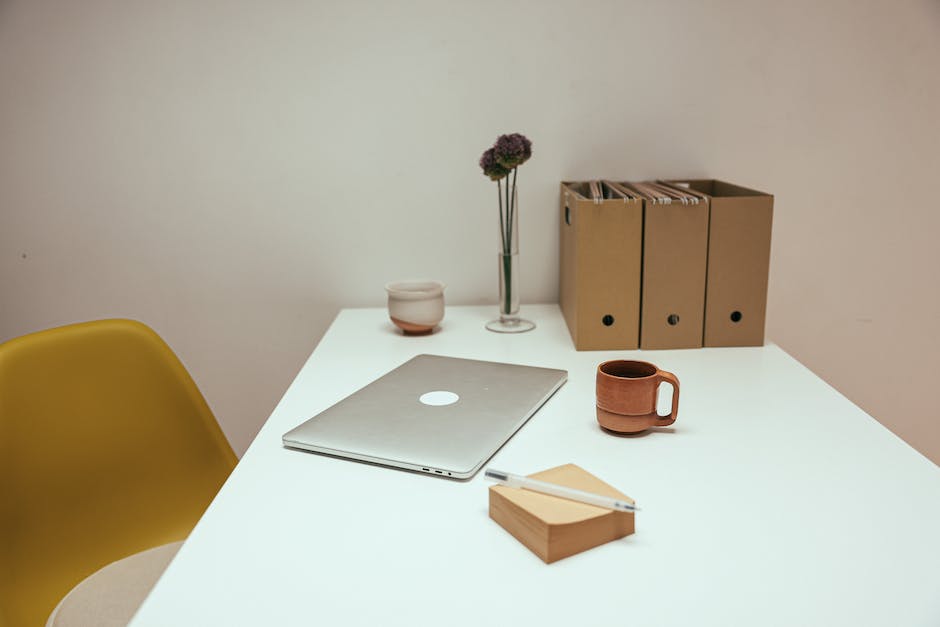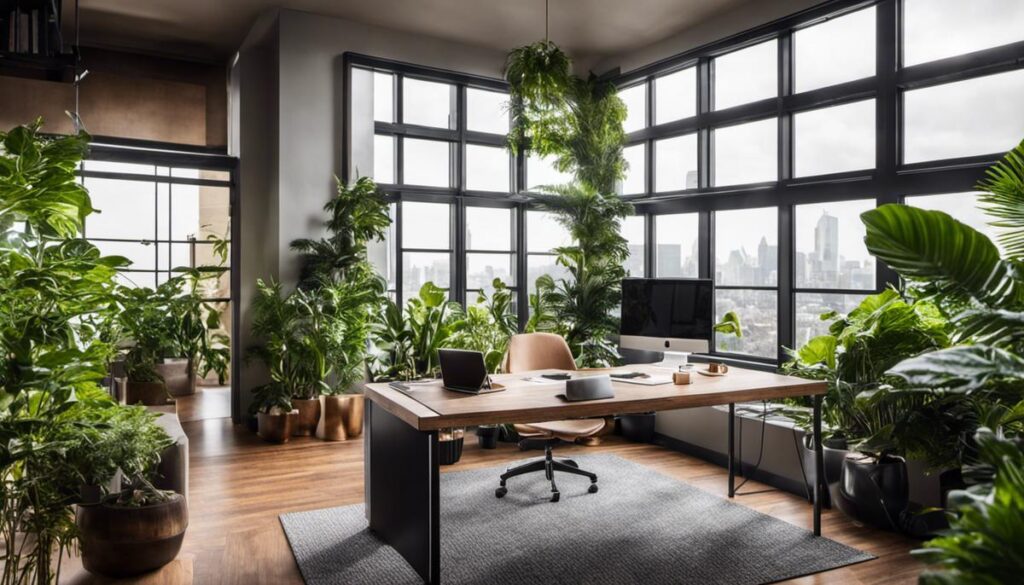In an era where remote work is increasingly becoming the norm, creating a comfortable, efficient, and healthy home office environment is paramount. One simple yet impactful method to elevate your workspace is through the integration of greenery. Plants not only breathe life into the room but also come with an array of benefits, ranging from improving air quality to boosting productivity and mood.
Our exploration begins by understanding these benefits deeply, further navigating through choosing the right plants apt for your work space, their proper care, and maintenance, soon culminating into creative and aesthetic approaches to incorporate these botanic elements into your home office decor.
Benefits of Plants in the Home Office

Significance of Greenery in the Workspace
The office space, be it in a corporate building or at the comfort of your home, is a common source of stress, tension, and constant action. Having plants in the workplace is no longer simply an aesthetic choice. Research conducted over the years indicates that maintaining greenery in the office has significant benefits—ranging from improving health to enhancing productivity.
Enhancement of Productivity and Concentration
A 2014 study by Cardiff University’s School of Psychology found that employees were 15% more productive when their workplaces were filled with houseplants. The study concludes that the presence of plants could make workers more engaged and focused on their work, thereby fostering increased productivity. The greenery keeps the space lively and adds necessary vitality, which is extremely conducive to maintaining concentration and positivity.
Improvement of Air Quality and Reduction of Noise Levels
Plants not only add a touch of nature to the environment but also purify the air. They absorb harmful pollutants and carbon dioxide while releasing fresh oxygen, thereby improving air quality. Plants such as snake plants, spider plants, and peace lilies are particularly known for their air-purifying abilities. Having these plants in the office can reduce headaches, respiratory issues, and eye irritations that are commonly caused by pollutants and stale air. Additionally, plants can surprisingly help with noise reduction. They can absorb, diffract, and reflect noise, making the home office a less distracting place to be.
Maintenance of Physical Health
The International Journal of Environmental Research and Public Health published a study in 2020 that found a correlation between the presence of indoor plants and a decrease in fatigue and health complaints among office workers. Green foliage in a workspace may influence the workers’ subconscious minds, making them more relaxed and less prone to headaches or sickness.
Boosting Mental Health and Stress Alleviation
A study in the Journal of Physiological Anthropology found that interacting with indoor plants, such as watering or potting, can reduce physiological and psychological stress. Keeping plants in the home office provides a much-needed break from the harsh realities of work stress. They create a calming, serene environment—improving overall mood, reducing anxiety, and promoting comfort.
Conclusion
Introducing plants to a home office environment is not just aesthetic; it’s beneficial. Through their positive impact on productivity, improvement of air quality, general health enhancements, and stress reduction abilities, plants can transform any workspace into a healthier, more revitalizing, and productive environment.
House Plant Essentials
Choosing the Right Plants for Your Home Office

Selecting the Best Plants for Your Home Office: Essential Considerations
When it comes to picking the most suitable plants for your home office, there are myriad factors to weigh. The primary aspects to ponder include the amount of available space, the light conditions in your office, the level of care you can provide, and the unique benefits offered by various plant types.
Space Allocation
When considering plants for your office, first take into account the amount of available space. Larger plants, like fiddle-leaf figs or rubber plants, can act as statement pieces in a room but might overpower small desk spaces. For smaller work areas, consider mini potted plants like succulents or air plants that take up little space but still bring life to your table. Using wall-mounted plants or hanging planters can also be a smart space-saving solution.
Consider the Light Conditions
Light conditions are another important factor. Some plants, such as the snake plant and ZZ plant, can tolerate low light conditions and are suitable for offices with few or small windows. Conversely, other plants, like succulents and cacti, require ample sunlight and should be placed near a window with good light exposure.
Maintenance Needs
The amount of maintenance you can provide should also influence your choices. Some plants, like orchids and ferns, need more attention and care, while others, like pothos and spider plants, are more low-maintenance and suitable for those who may not have a lot of time or experience in plant care.
Air Purifying Qualities
Many office dwellers choose plants not just for their appearance, but also for their air-purifying qualities. Studies show that certain plants can filter common volatile organic compounds (VOCs) in the air. Snake plants, spider plants, and aloe vera are known for their air-purifying abilities, making them a practical addition to a home office.
Low-Light Tolerance
The ability to tolerate low light conditions is a valuable trait for an office plant, as offices often have few windows or are situated in parts of the house that receive less natural light. Cast-iron plants, devil’s ivy, and ZZ plants are all known for their ability to survive in low-light conditions.
Plant Recommendations
Based on these criteria, there are several plant recommendations that work well for home offices. The ZZ plant is low maintenance, requires minimal light, and has air-purifying qualities. Snake plants are also easy to care for, requiring little water and can tolerate both low light conditions and bright, indirect light. If you have a lot of space and direct sunlight, consider adding a rubber plant or a fiddle-leaf fig to your office. For smaller spaces, air plants, succulents, or peace lilies are an excellent choice.
Understanding the specific conditions of your home office, along with the growth requirements and ongoing care needs of the plant you choose, is critical in selecting the perfect home office plant.
Care and Maintenance of Home Office Plants

Understanding the Importance of Watering Schedules for Office Plants
Correct watering practices are crucial for the survival and well-being of any home office plant. The repercussions of overwatering or underwatering can be detrimental to the plant’s health. Each plant species comes with an ideal watering frequency. As such, it’s key to get acquainted with the unique requirements of your chosen plants. For instance, succulents and cacti need less watering compared to other species like ferns or peace lilies. Many plants thrive best when their soil is kept moist but not drenched. A useful trick is to use your finger to check the top inch of soil. If you find it dry, that’s a sign to water your plant. But be careful to avoid overwatering, which frequently leads to root rot and can kill indoor plants, by avoiding waterlogged soil.
Light Necessities for Home Office Plants
Another important aspect to consider is the light necessities of your office plants. Some plants can thrive in lower light conditions, making them ideal for offices with few windows or direct sunlight. Others, however, require bright, indirect light to grow properly. For example, snake plants and ZZ plants are both hardy options that can tolerate lower light levels, while plants like the fiddle leaf fig need brighter light. Look up the specific light requirements for each plant and try to position them in your office accordingly.
Ideal Temperatures for Home Office Plants
The majority of common indoor plants are tropical species, which means they prefer moderate temperatures and humidity levels. Generally, indoor plants thrive in temperatures between 65°F and 75°F, with low to moderate humidity. Some plants may require adjustments in temperature throughout the day. For instance, succulents and cacti enjoy warmer temperatures during the day and cooler temperatures at night. Always make sure to check for specific temperature requirements for each species.
Troubleshooting Common issues: Pests or Diseases
Unfortunately, even with the best care and attention, your home office plants can still fall victim to pests or disease. The most common indoor plant pests are spider mites, aphids, gnats, and mealybugs. If you notice discoloration or deformities in your plant’s leaves, you may have a pest problem. To combat this, you can use insecticidal soap or neem oil, both of which are safe for indoor use. Diseases often manifest as fungus or mold, usually due to overwatering or poor ventilation. Adjusting your watering habits and ensuring your plant has good airflow can prevent most diseases.
Choosing the Right Pot for Your Home Office Plants
The selection of your plant’s pot can significantly influence its growth and overall well-being. The general guidance is to choose a pot that correlates with the size of your plant and includes enough drainage holes to keep excess water from pooling. Experienced growers generally repot every few years. However, it’s important to look out for signs that your plant has outgrown its pot, such as roots poking out from the drainage holes or the need for frequent watering.

Plant Styling Ideas for the Home Office

Determining the Best Position for Your Plants
The strategic placement of plants in your home office is an art in itself. It goes beyond merely setting a plant on your desk and calls for careful consideration of light, space, and aesthetic elements. Start by assessing the light conditions of your office. Some plants, such as succulents or cacti, flourish in ample sunlight, making it perfect for a desk near a south-facing window. On the other hand, snake or ZZ plants are ideal for offices with minimal natural light.
The height of your plants also plays an important role in the overall look and appeal. Floor plants can effectively fill up void corners, whereas tabletop plants can introduce a refreshing green touch to your workspace. For those who may be restricted by space, hanging plants like a Boston fern or a string of pearls offer a stylish solution.
Pottery & Planters
The pots you choose for your plants can significantly impact your home office’s overall aesthetic. There are countless options to pick from – plain terra-cotta pots, colorful ceramics, modern concrete planters, and much more. Think about the color scheme and style of your office. If your decor is minimalistic, you might opt for clean lines and neutral tones. On the other hand, if your space is vibrant and eclectic, you could consider bold, colorful pots.
Changing up the planter styles can also make a big difference in the look and feel of your space. You could mix and match pots of different materials, sizes, and colors for a more dynamic look.
Creating a Plant Nook
Having a specific area devoted to your plants can be a great way to incorporate greenery into your home office. A plant nook can be as simple as a corner shelf filled with small, decorative plants, or it could be a large stand-alone shelving unit housing an array of larger plant species.
This plant-focused area can serve as a calming focal point in the room, creating a cozy atmosphere that can relieve stress and boost productivity. Arranging your plants at different heights and in varied pots can also add visual interest and depth to your plant nook.
Balancing with Overall Office Design
While incorporating plants into your home office decor, it’s vital to ensure that they complement the overall design of the room. Maintain a balance between the amount of greenery and other elements in your office. Too many plants might make the room feel cramped, and too few may not have the desired visual impact.
One way to strike the right balance is to treat plants as accent pieces. For instance, a large fiddle leaf fig can lend a dramatic touch to a minimalist office. Small succulents can add a pop of green to a cluttered desk without overwhelming it. Consider also the colors of your plants – some have bright, variegated leaves that can act as color accents in your office.
In the end
keep in mind that there’s no “one-size-fits-all” approach to decorating with plants. The best plant styling ideas are those that make your office feel like a calming, productive space that reflects your unique style and needs.

Embarking on this green journey, you not only improve your work environment but also add a touch of aesthetic appeal to your workspace. By understanding the benefits, choosing the apt plants for your conditions, and learning their care and maintenance, you cultivate a little thriving ecosystem right on your desk or besides your chair. Weaving all these elements together, you create a distinctive home office that promotes wellbeing, productivity, and a greener lifestyle. Remember, plants are not just decor objects but living entities that reciprocate the care and love you offer and reward you with a serene, breathable, and hearty work ambiance.
